Free download: Top 10 Natural & Easy Remedies for Joint Pain from Home. Learn these helpful remedies.
Estimated Reading Time: 7 minutes read
Experiencing lower back pain is a common issue many people face, often due to the quadratus lumborum muscle, commonly called the QL. This muscle is crucial for various movements and maintaining posture, and its dysfunction can lead to discomfort and limitations in daily activities.
In this article, I will provide insights into the causes of quadratus lumborum muscle pain, pain release techniques, and recommended stretches to alleviate discomfort. Also, we will touch upon the importance of core strengthening exercises to maintain a healthy and functional QL muscle.
Table of Contents
The Quadratus Lumborum: Location and Functions
The quadratus lumborum is located in the lower back region on either side of the lumbar spine. It attaches to the last rib, the lumbar vertebrae, and the iliac crest of the pelvis. The QL muscle plays several vital roles in the body:
- Spinal Stabilization: The QL muscle plays a crucial role in stabilizing the spine, especially during activities that involve standing, walking, or lifting objects. It helps maintain the spine’s alignment, preventing it from collapsing under the body’s weight or external loads. This is essential for avoiding back injuries during daily activities or exercise.
- Pelvic Stability: The quadratus lumborum also contributes to pelvic stability. It connects the pelvis to the spine and the lower ribs, helping to keep the pelvis level and balanced. This is particularly important for activities that involve one leg, like running or stepping up onto something, as it prevents the pelvis from tilting to one side.
- Lateral Flexion: The QL muscle is also involved in lateral flexion of the spine, which is the side-bending movement. This movement is used in everyday activities like reaching for something on a high shelf or bending down to tie a shoe.
- Hip Hiking: The quadratus lumborum is responsible for elevating the hip on the same side, a movement known as hip hiking. This is important for activities that involve lifting one leg off the ground, such as climbing stairs or stepping over an obstacle.
- Breathing: Lastly, the QL muscle aids in forced expiration by depressing the lower ribs. This function is essential for activities that require forceful exhalation, such as singing, playing a wind instrument, or performing heavy lifting exercises. This muscle’s role in breathing is often overlooked but is critical for optimal respiratory function.
Causes of Quadratus Lumborum Muscle Pain
The QL muscle is prone to tightening and experiencing pain due to several reasons:
- Poor Posture: Maintaining an improper posture, especially while sitting for extended periods, can put undue stress on the QL muscle.
- Imbalanced Muscles: Weakness in the abdominal muscles or imbalances in the hip muscles can lead to overcompensation by the QL muscle, resulting in tightness and pain.
- Heavy Lifting: Lifting heavy objects without proper technique can strain the QL muscle.
- Prolonged Standing: Standing for extended periods can lead to fatigue and tightening of the QL muscle.
- Repetitive Movements: Engaging in repetitive activities, such as swinging a golf club or tennis racket, can lead to overuse of the QL muscle.
- Trauma or Injury: Any direct trauma or injury to the lower back region can cause inflammation and pain in the QL muscle.
How to Release QL Muscle Pain and Tightness
Alleviating pain and tightness in the quadratus lumborum muscle involves a combination of stretching and strengthening exercises. Here are three stretches to release QL muscle pain and tightness:
Sitting Quadratus Lumborum Stretch
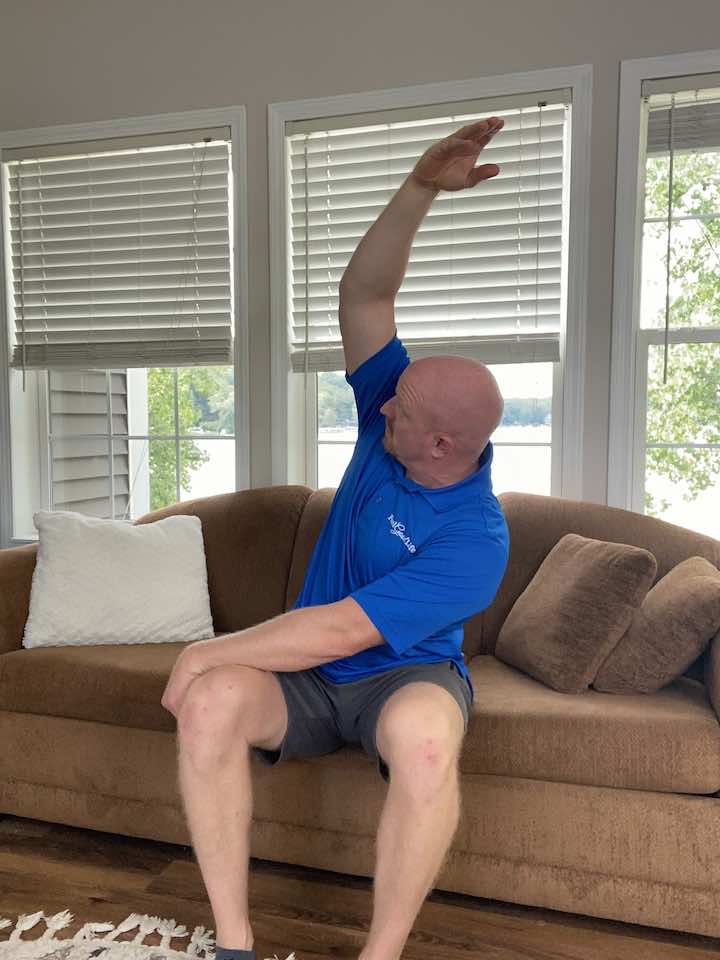
- Sit on a chair in an upright position.
- Reach across your body with one hand and hold onto the outside of the thigh on your opposite side.
- Simultaneously, reach with your other arm up and across, creating a gentle stretch along the side of your body.
- Hold this stretch for 30 seconds.
- Repeat this stretch for a total of 3 times.
Side Lying Quadratus Lumborum Stretch
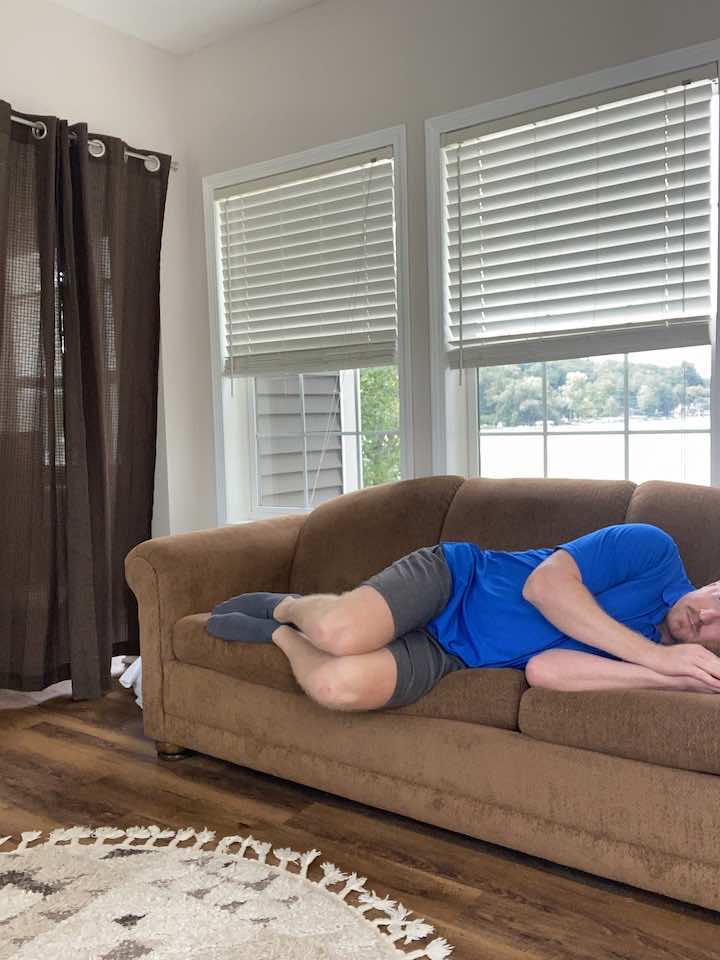
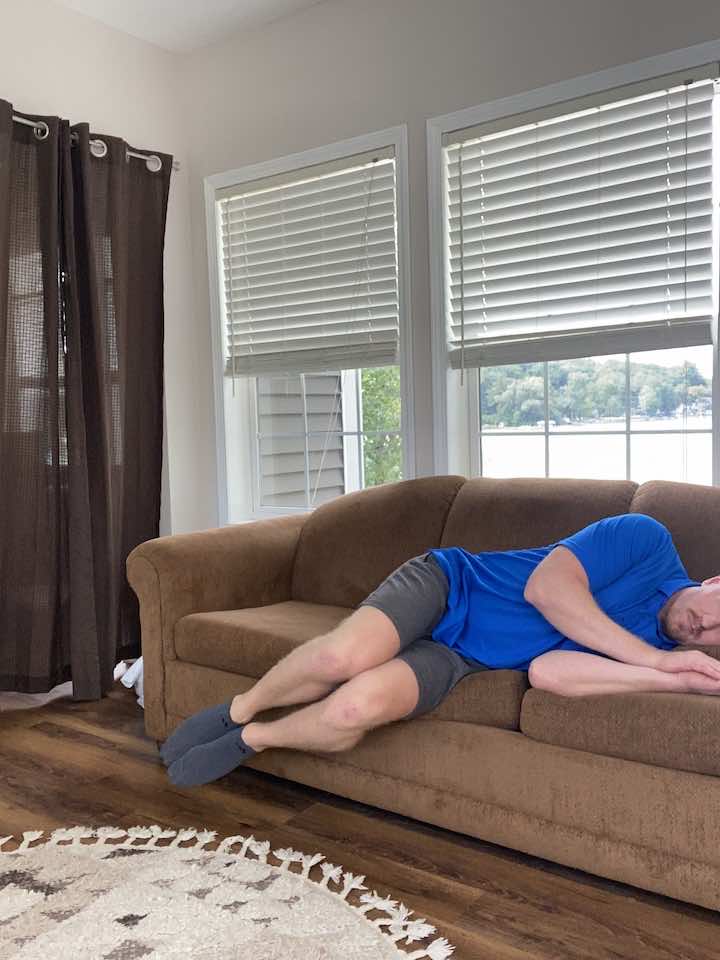
- Lie on your side on your bed with the tight side on top.
- Bend your knees, allowing your feet to hang off the side of the bed.
- Let your feet hang off the side, which will gently pull your hip and stretch your quadratus lumborum muscles.
- Hold this stretch for 30 seconds.
- Repeat this stretch for a total of 3 times.
The Importance of Core Strengthening
The health of your QL muscle is deeply connected to the strength of your core muscles, which include the abdominals, obliques, and the muscles surrounding your spine. These muscles are fundamental in maintaining proper posture and spinal alignment.
A robust core provides a solid base for all body movements, whether they are everyday activities like lifting groceries or more intense exercises like weightlifting. When your core muscles are weak, your QL muscle must work harder to stabilize your spine and pelvis, leading to overuse and pain.
On the other hand, a strong core alleviates pressure on the QL muscle and helps distribute the load more evenly across your body. This is why core strengthening is often recommended as part of the QL pain and tightness treatment.
Remember, it’s not just about stretching; incorporating these core-strengthening exercises into your routine is essential for overall back health and preventing QL pain.
1. Abdominal Brace
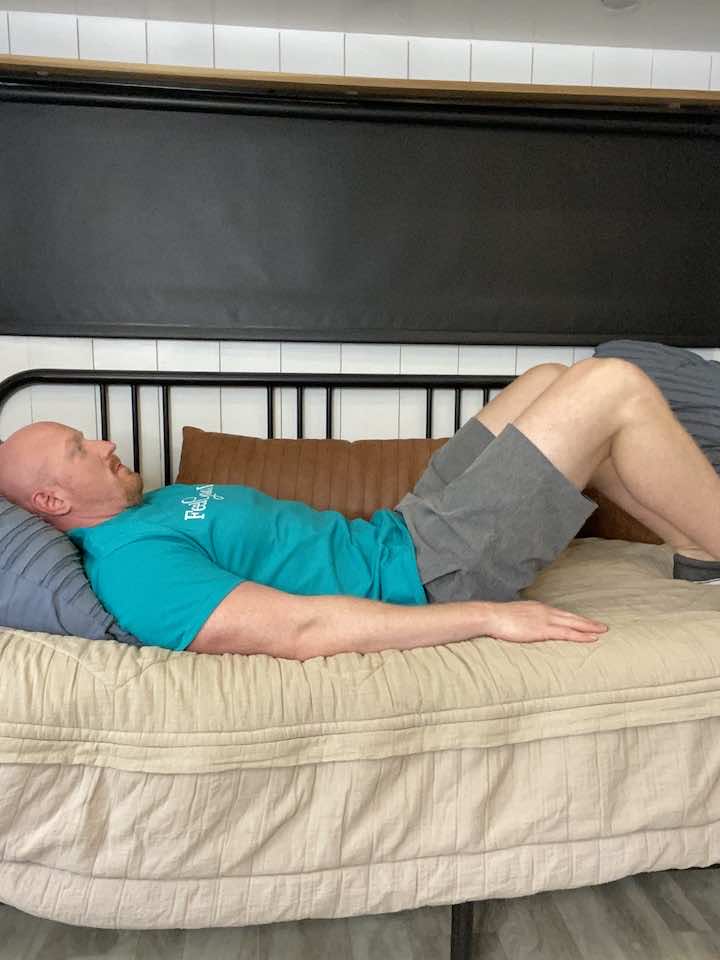
- Begin on your back with your knees bent and feet flat on the floor.
- Exhale and engage your core muscles by drawing your belly button in toward your spine.
- Hold this position for 5 seconds.
- Relax your core muscles.
- Repeat this exercise 10 times and a total of 3 sets.
2. Bent Knee Fallouts
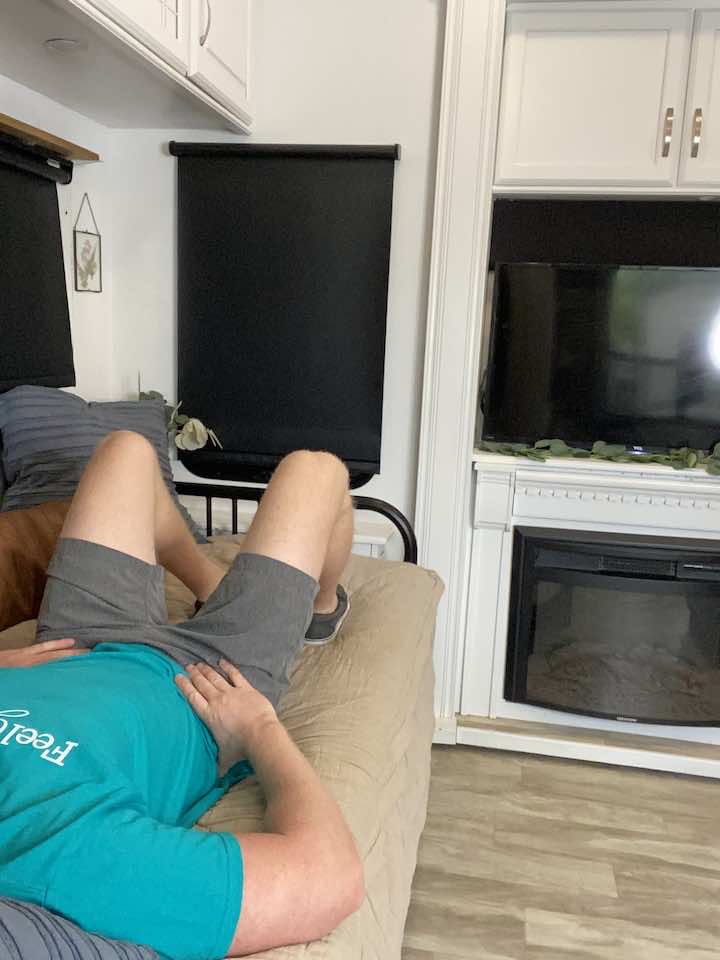
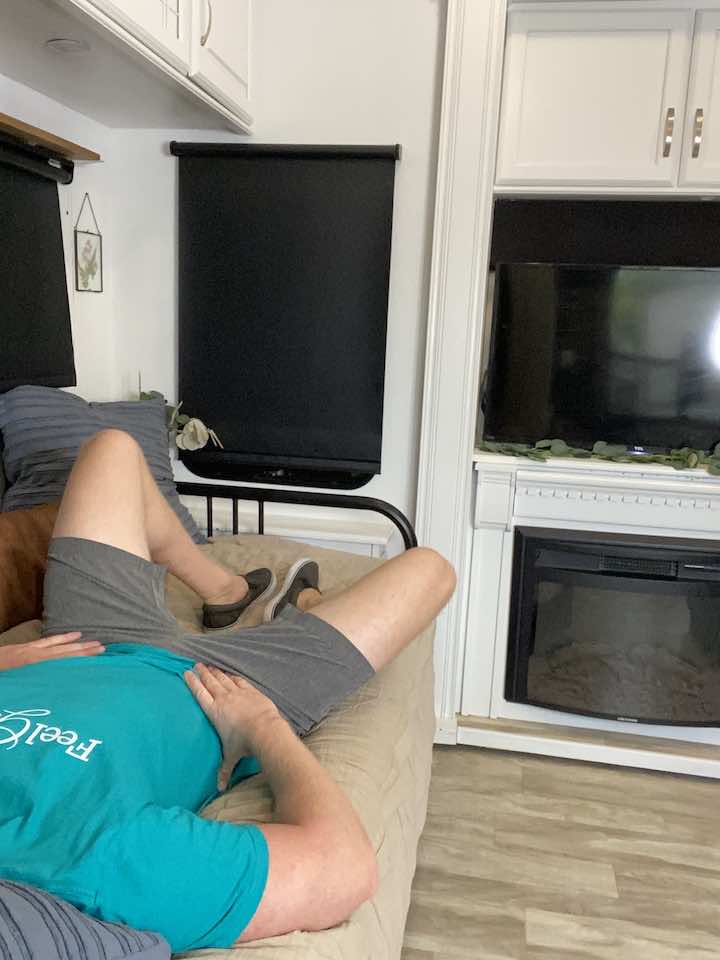
- Lie on your back with both knees bent and your hands resting on your hips.
- Engage your core muscles by gently bracing them, creating a feeling similar to a trampoline’s surface. Ensure this engagement feels subtle, without pushing your core up or sucking it in.
- Keep your left knee stationary, and slowly lower your right knee to the side at a 45-degree angle.
- Bring your right knee back to the center while maintaining core engagement. Focus on keeping your hips still during this asymmetrical movement.
- Use your hands on your hips to monitor for any hip movement. The goal is to keep your hips perfectly still throughout the exercise.
- Perform 10 repetitions and a total of 3 sets on the right side, then switch to the left side.
3. Marching Core
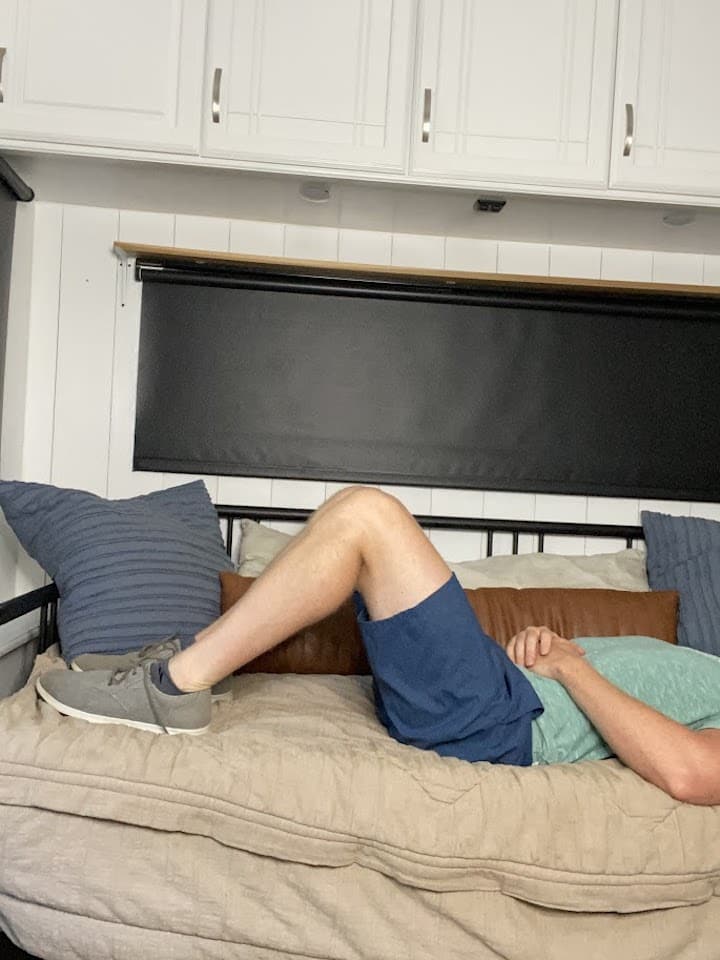
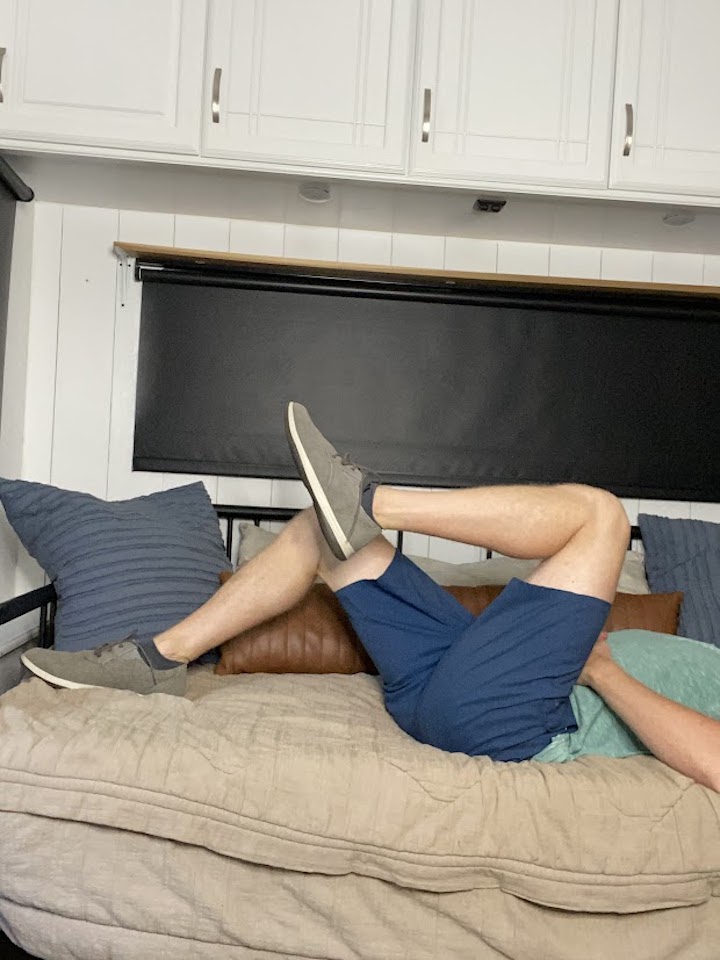
- Starting position: Laying flat on your back (on your bed, couch, or floor), with your knees bent and feet flat on the surface.
- To activate your transverse abdominis, try to pull the belly button down towards the surface, gently flattening the back simultaneously. This will help to brace the core.
- While keeping this braced core (don’t forget to breathe!), lift one knee towards your chest, like a march, then lower back down to the surface.
- Repeat 10 repetitions for 3 sets. Perform on the opposite leg.
- You can perform all repetitions on one side, switch to the other or perform alternatingly between the legs.
Conclusion
The quadratus lumborum muscle is vital for maintaining the stability and mobility of the lower back and pelvis. Regular practice of the stretches and core-strengthening exercises mentioned in this article can significantly contribute to maintaining a healthy and functional QL muscle. Additionally, being mindful of your posture and avoiding prolonged periods of sitting or standing can also help in preventing QL muscle pain and tightness.
However, it is crucial to remember that while these exercises can be incredibly beneficial, they are not a substitute for professional medical advice. If the pain persists, worsens, or if you experience any unusual symptoms, it is always advisable to consult a healthcare professional. Taking a proactive approach to your health by addressing pain and discomfort early can significantly improve your quality of life.













